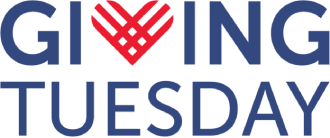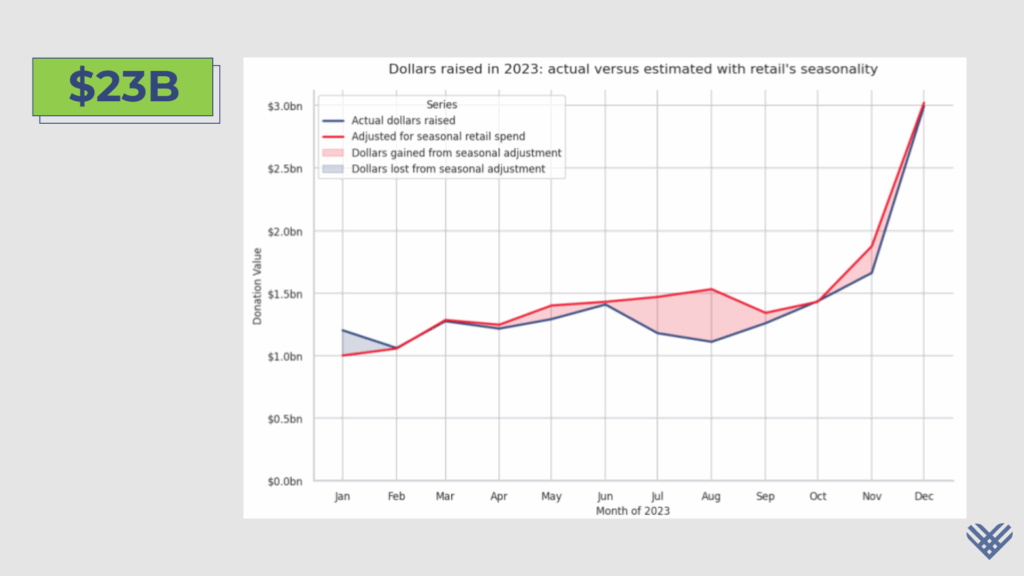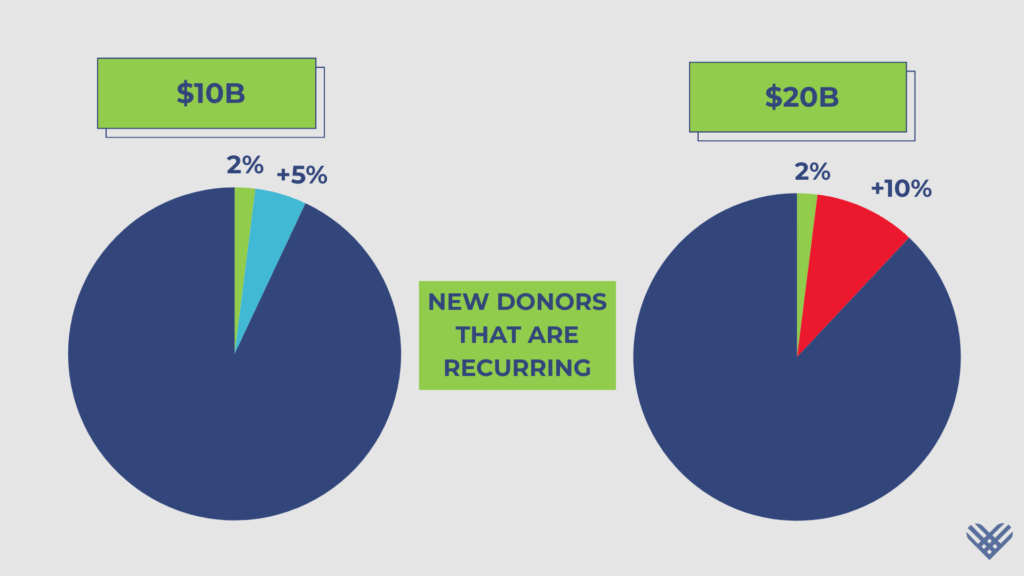Over the last few weeks the GivingTuesday Data Commons has released the latest Fundraising Effectiveness Project (FEP) and GivingPulse reports, illustrating giving trends in the U.S. from 2024. These reports help us understand the challenging environment the nonprofit sector finds itself in – dollars are up, donors are down – an ongoing trend over the last few years. But they also help us understand the many ways people are generous.
While the data from FEP and GivingPulse can tell us about the past, to learn for the future, the GivingTuesday Data Commons wanted to better understand what these data may be able to tell us about the opportunities we haven’t yet realized in the giving economy.
The Untapped Potential in Charitable Giving
Retail markets have long been experts at growing customer loyalty using data to personalize experiences, meet customer needs, and encourage repeat spending. Charitable giving in the U.S. is a major economic force too, rivaling some of the biggest consumer industries. Yet nonprofits haven’t had the same access to market insights that show where there’s room to grow, or how shifts in behavior, policy, and the economy affect giving.
At the GivingTuesday Data Commons, we recently set out to model where the giving economy could expand. We know people are generous, so we set out to understand what shifts we could make in our fundraising practices that could help us realize some of the untapped generosity. What would it take?
Here’s what we found: with the right strategies, nonprofits could unlock an estimated $52 billion more in charitable giving each year.
Here’s how:
1. Deseasonalizing Giving Beyond Year-End — Estimated $23 Billion a Year
Today, the nonprofit sector relies on a heavy increase in giving in the last few months of the year. Retail businesses have long mastered the art of consumer engagement, leveraging data-driven insights to optimize purchasing behavior, personalize experiences, and build long-term customer loyalty. If charitable giving followed similar patterns—where donors were engaged as actively as consumers—nonprofits could see a dramatic rise in participation and retention all year long.
We used data from the Fundraising Effectiveness Project and the U.S. Census Bureau to model seasonal trends between retail and giving sectors and see what would happen if donation patterns looked more like consumer spending patterns – things like, if seasonal giving spikes resembled holiday shopping surges, or if donor segmentation was as sophisticated as e-commerce targeting. If fundraising was as active throughout the year as it is in Q4, nonprofits could potentially raise an additional $23 billion annually.
2. Growing Recurring Giving — Up to $20 Billion a Year
Think about how many people pay for monthly subscriptions — from streaming services to meal kits — without a second thought. That same model can work for nonprofits through recurring giving programs.
Recurring donors give more over time, stay connected longer, and create more stable revenue. While the percentage of donors who are recurring has increased from 3.76% in 2019 to 6.23% in 2024, the percentage of new donors acquired as recurring has remained relatively constant at just under 2%. We analyzed donation patterns and found that simply increasing the share of new donors who sign up for recurring gifts by 5 percentage points could add $10 billion a year to the sector. A 10-point increase could add $20 billion — putting U.S. nonprofits closer to recurring giving rates already seen in countries like Norway and Spain.
3. Reaching People Who Aren’t Being Asked — $19–46 Billion a Year
Finally, there’s a huge missed opportunity: people who might give — if only someone asked. Those who have the capacity and willingness to give but are not being actively engaged.
Our GivingPulse surveys show that about 10% of people who aren’t currently being solicited would likely give if they were invited to. By combining this insight with data on household giving behaviors, we estimate that this untapped generosity is worth between $19 billion (conservatively) and $46 billion (more optimistically) per year.
Expanding outreach to younger donors, more diverse communities, and people outside traditional donor bases could open entirely new streams of support.
The Bottom Line
While challenges in fundraising are real, there’s also enormous opportunity. With smarter strategies that borrow from what’s worked in other industries — year-round engagement, subscription-like recurring giving, and broader outreach — nonprofits could dramatically grow giving in the years ahead.
The resources are there. The generosity is there. The next step is creating the conditions that allow it to flourish.
We are working with partners to launch task forces like our new recurring giving task force, to help realize these opportunities, starting with Monthly Giving Awareness Week May 12-16 alongside RKD Group and Dana Snyder.
To learn more about the methodology and dig into more of the research, you can read this research note.





